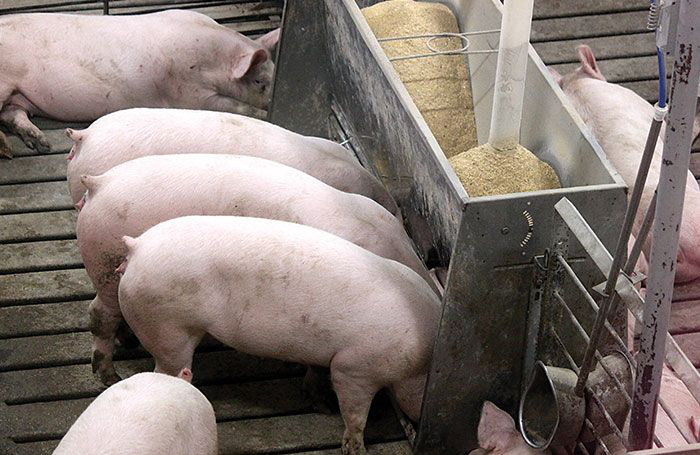来源:WATTAgNet
作者:Ioannis Mavromichalis

Recent hog prices in the US have left little desire to expand production, whereas feed cost remains the first to be restrained.
由于近期生猪价格低迷,美国养猪户几乎没有扩大生产规模的意愿,而饲料成本仍是首个应该限制的因素。
Reduced feed cost remains the major weapon pig producers have against decreasing hog prices. This has been true for all such cyclical periods, and is definitely true now and for the immediate future as we do not expect hog prices to increase substantially.
降低饲料成本仍然是生猪养殖者对抗生猪价格下降的主要武器。所有这些周期性时期都是如此,现在和不久的将来也是如此,因为我们预计生猪价格不会大幅上涨。
Thus, we need to focus on reducing absolute feed cost, assuming that feed efficiency has been maximized through balanced rations that correspond to genetics being used – an exercise that needs to be undertaken when hog prices are high, and not now.
因此,我们需要把重点放在降低绝对饲料成本上,假设饲料效率已经通过与所使用的基因相对应的均衡口粮得到了最大限度的提高——这种做法需要在生猪价格高企时进行,而不是现在。
There are three major ways to cut feed cost without unbalancing it. Measures of just cutting back on expensive ingredients and/or additives, or switching suppliers in hope of reduced margins is out of the question, or rather is a topic for another conversation. Here, we will focus on scientific ways to produce the same pig at reduced feed cost, without compromising quality and animal health.
有三种方法可以在不打破平衡的情况下,降低饲料价格。仅仅削减价格昂贵的原料或者添加剂、或者为了降低利润率而更换供应商,这些措施都是不可能的,更确切地说,这是另一个话题了。今天,我们将重点研究通过科学的方法,在不影响质量及健康状况的条件下,以更低的饲料成本生产出同样的生猪。
1. Find alternative ingredients with more fiber. Pigs can compensate for altered feed nutrient density by adjusting their feed intake – always within certain limits. Luckily, this is more profitable in growing-finishing pigs, where the majority of the feed bill goes.
1.寻找含有更多纤维的替代原料。在一定的范围内,猪可以通过调整采食量来平衡饲料营养密度的变化。幸运的是,这对生长育肥猪来说,利润空间更大,因为育肥猪消耗了绝大部分饲料。
2. Replace additives with nutrients or ingredients and vice versa. Now is a good time to evaluate if some nutrients or ingredients can be enhanced by certain additives, or in reverse, if removing these additives can bring about any feed cost savings.
2.用营养素或成分代替添加剂,反之亦然。现在正是评估某些营养素或成分的效果是否可以通过添加某些添加剂得到增强的好时机;反过来,也可以评估去处这些添加剂是否可以降低饲料成本。
3. Reduce excessive safety margins by improving or removing the reasons why such additions were required in the first place. For example, if you add more lysine because you pellet at high temperatures, consider reducing pelleting temperature, especially if you use an alternative ingredient that improves pellet quality at the same time.
3.找到一开始需要添加这些成分的原因,加以改善,从而降低安全边际。比方说,如果因为制粒温度较高,所以添加了更多赖氨酸,那就降低制粒温度,尤其是当你同时还使用了替代成分来提高制粒质量时。
Reducing feed cost should be a constant exercise, more so now that hog prices are in the red. What we should avoid doing now is offering pigs an unbalanced diet that results in lower cost per pound of feed, but ends up increasing feed cost per pound of weight gain.
降低饲料成本应该是一项持续性的工作,尤其是在目前生猪价格出现赤字的情况下。如果一种饲料每磅的成本降低了,但生猪每增长一磅体重的成本却升高了,我们应该避免给猪饲喂这种不均衡的饲料。
(文/爱猪网记者刘坤颖编译,爱猪网原创,转载请注明出处)










